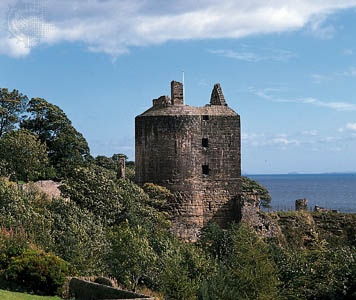Kirkcaldy
Scotland, United Kingdom
 town and seaport, Fife council area and historic county, eastern Scotland, on the north shore of the Firth of Forth.
town and seaport, Fife council area and historic county, eastern Scotland, on the north shore of the Firth of Forth.First developed by Dunfermline Abbey nearby, Kirkcaldy was a flourishing port during the later Middle Ages. It was designated a royal burgh in 1450, and the royal charter was confirmed by King Charles II in 1662. In the course of the 16th century it became an important commercial centre and seaport, and the local salt trade was then the largest in Scotland. Flemish influence appears in a group of 15th-century houses overlooking the harbour; they now belong to the National Trust for Scotland. After a decline in the 18th century, Kirkcaldy's fortunes revived with the establishment of its linen industry in the early 19th century and reached another peak after the development of its famous linoleum industry. Large areas of 19th-century factories and warehouses left by its decline were cleared and redeveloped for housing. Kirkcaldy's other industries include malting, linen weaving, furniture manufacturing, and light electrical engineering. Its beach attracts summer visitors.
Kirkcaldy is called the “lang toun” because, after it absorbed Linktown and Abbotshall on the west and Pathhead, Sinclairtown, and Gallatown on the east, its main street reached a length of nearly 4 miles (6.5 km). The town's area was extended in 1930 by the absorption of the former royal burgh of Dysart and again in 1939 and 1950 by the addition of more land. The parish church was mainly rebuilt in 1809 but has a Norman tower. The high school (1894) succeeded the burgh school (1582), where the religious teacher Edward Irving taught from 1812 to 1818 and the writer Thomas Carlyle taught from 1816 to 1818. Kirkcaldy was the birthplace (1723) of the political economist Adam Smith (Smith, Adam). Pop. (2004 est.) 47,090.
- Claude-Frédéric-Armand Schaeffer
- Claude Garamond
- Claude, Georges
- Claude Gillot
- Claude Goudimel
- Claude Grahame-White
- Claude-Jean Allouez
- Claude-Joseph-Désiré Charnay
- Claude Joseph Goldsmid Montefiore
- Claude-Joseph Rouget de Lisle
- Claudel, Camille
- Claude Le Jeune
- Claude Lelouch
- Claude Lorrain
- Claude Lorrain glass
- Claude-Louis Berthollet
- Claude-Louis, comte de Saint-Germain
- Claude-Louis-Hector, duc de Villars
- Claude-Louis-Hector Villars, duc de
- Claude-Louis Mathieu
- Claude-Louis Saint-Germain, comte de
- Claudel, Paul
- Claude Lévi-Strauss
- Claude Mauriac
- Claude McKay